5 Tips for Protecting Your Child from Diaper Rash When Swimming
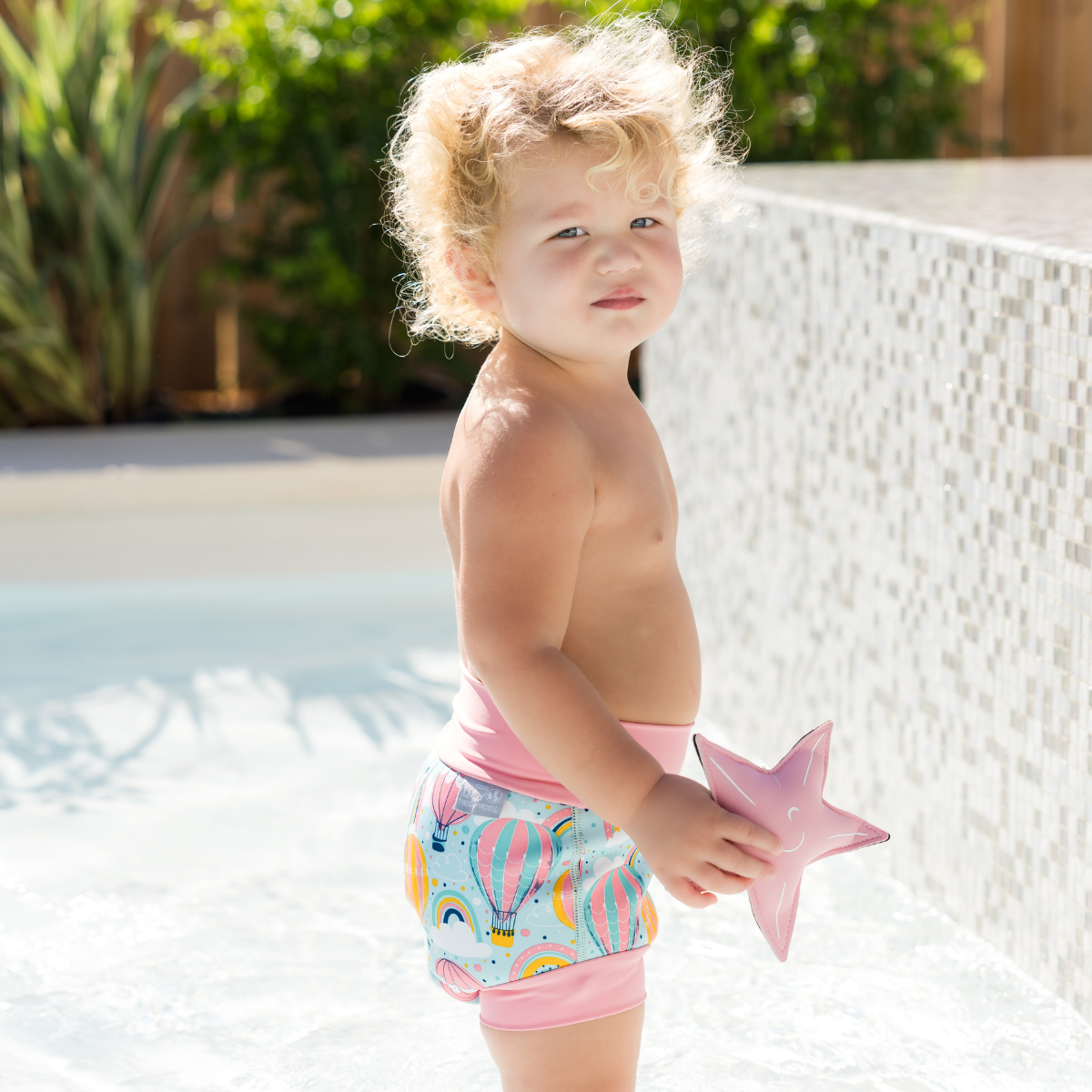
Your Cart

Although swimming doesn’t cause diaper rash, being in a wet diaper for long periods could make an existing diaper rash worse.
Diaper rash happens when the skin on a baby’s bottom becomes inflamed and sore. Sometimes the rash may have tiny spots or blisters.
Diaper rash is usually caused by a baby’s bottom being in prolonged contact with a dirty or wet diaper.
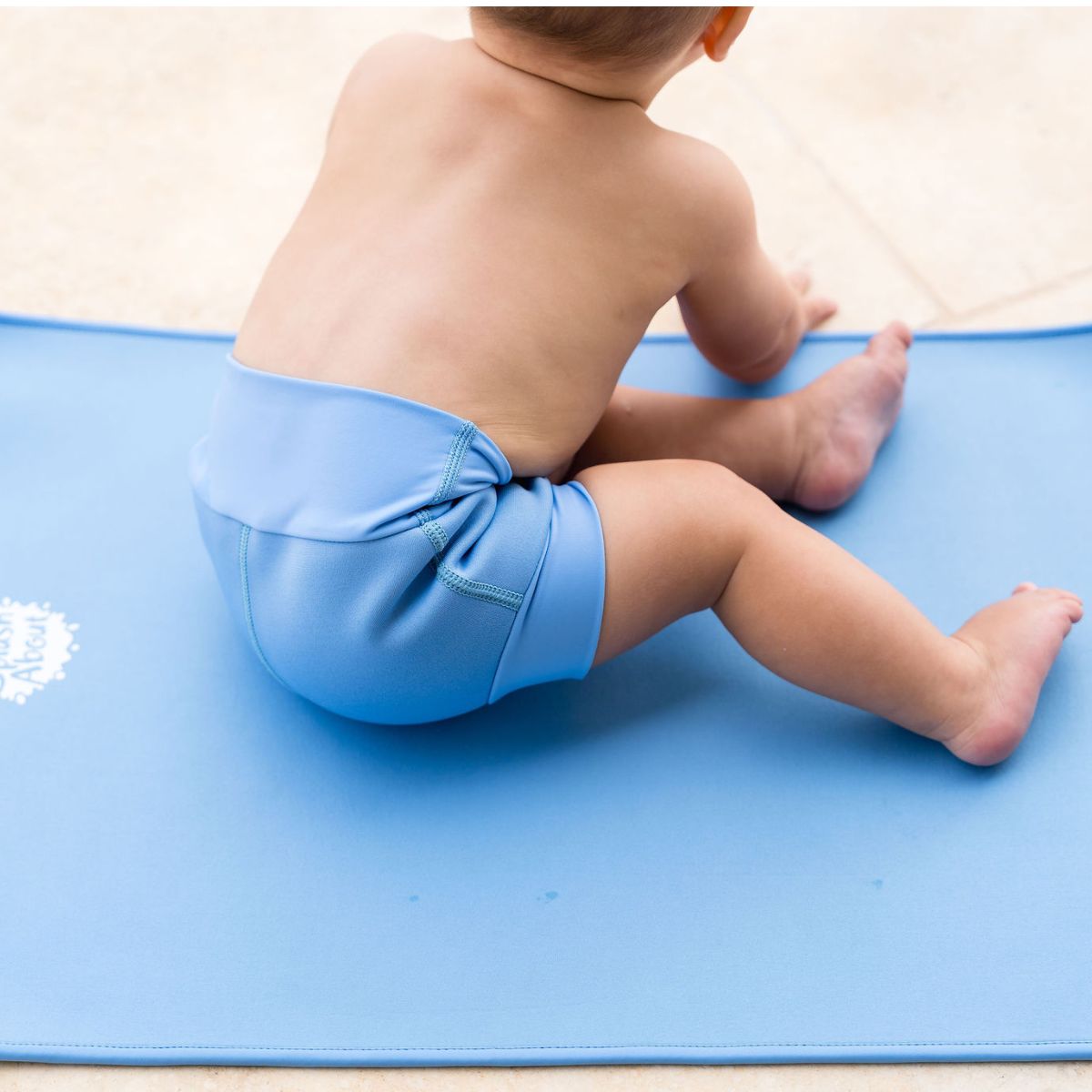
Disposable and reusable swim diapers are not designed to be absorbent, so they don’t draw liquid away from your baby’s butt as regular disposable diapers do. Removing the swim diaper as soon as your child leaves the pool will ensure their bottom isn’t in contact with a damp diaper for a prolonged period.
Swim diapers do not absorb pee and poop so, by drying your baby's bottom and swapping to a regular diaper quickly, you will ensure there are no poolside accidents, and help prevent the risk of diaper rash.
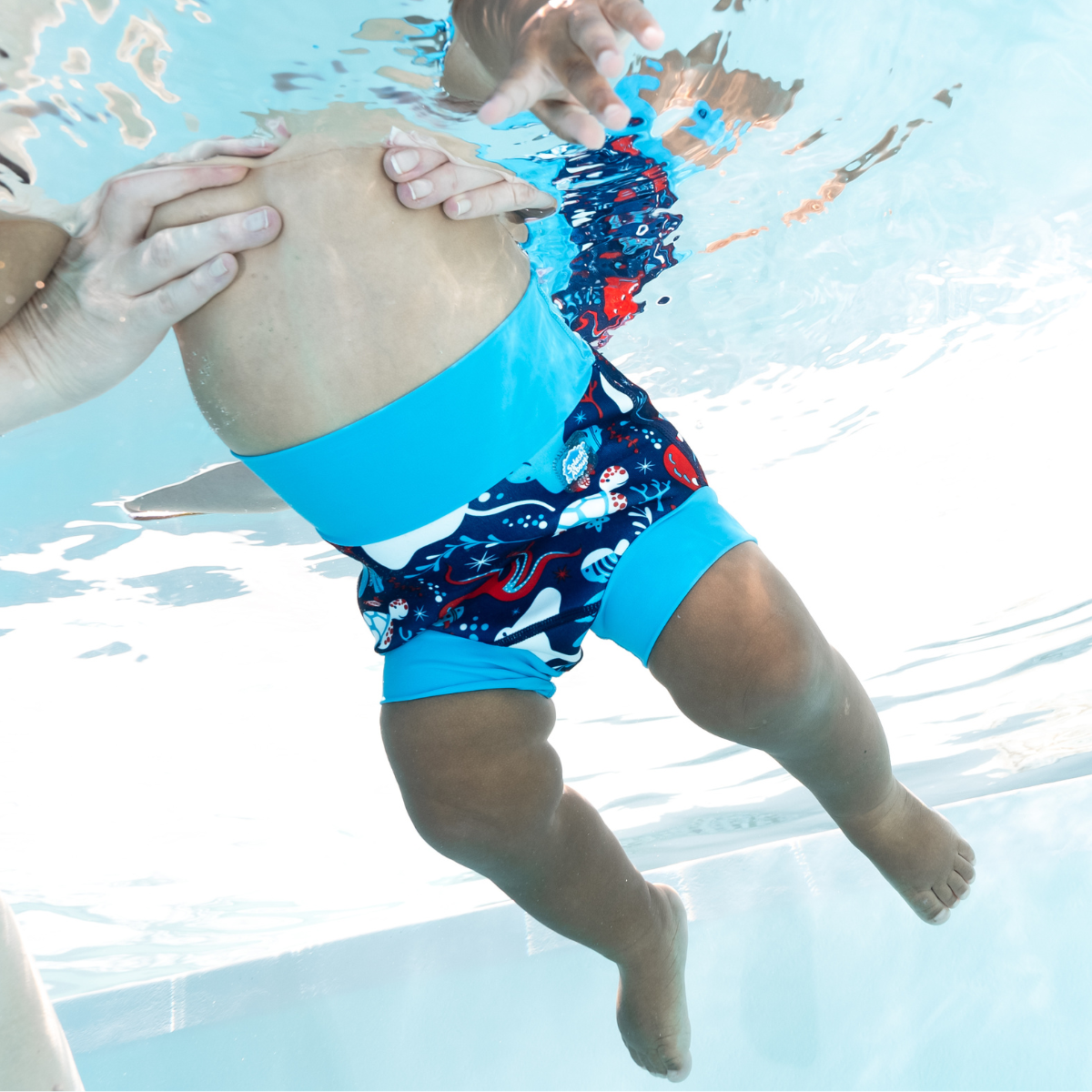
If your child is prone to diaper rash,
help protect their skin by applying a layer of barrier cream before entering the pool. Speak to your primary care physician or pharmacist about your best option for diaper rash creams and apply a layer before putting on your baby’s swim diaper.
If your child suffers from sensitive skin and is prone to eczema or other rashes then the Warm In One range from Splash About is an excellent choice for swimwear. These specialist swimsuits can be worn over barrier creams to help protect babies with sensitive skin.

Disposable and reusable swim diapers are not designed to be absorbent, so they don’t draw liquid away from your baby’s butt as regular disposable diapers do. Removing the swim diaper as soon as your child leaves the pool will ensure their bottom isn’t in contact with a damp diaper for a prolonged period.
Swim diapers do not absorb pee and poop so, by drying your baby's bottom and swapping to a regular diaper quickly, you will ensure there are no poolside accidents, and help prevent the risk of diaper rash.

If your child is prone to diaper rash,
help protect their skin by applying a layer of barrier cream before entering the pool. Speak to your primary care physician or pharmacist about your best option for diaper rash creams and apply a layer before putting on your baby’s swim diaper.
If your child suffers from sensitive skin and is prone to eczema or other rashes then the Warm In One range from Splash About is an excellent choice for swimwear. These specialist swimsuits can be worn over barrier creams to help protect babies with sensitive skin.
Neoprene is a soft, pliable fabric that is anti-microbial and much gentler on babies’ bottoms than disposable swim nappies. The Happy Nappy™ is a reusable swim diaper made from neoprene that is kind to sensitive skin, especially when combined with one of Splash About’s Diaper Wraps
The super soft cotton Diaper Wrap forms part of the Happy Nappy™ double layer system and is the ideal choice if your little one is used to wearing cotton diapers. Simply pop the cotton diaper wrap on before the Happy Nappy™ so the cotton is next to baby's skin. The diaper wrap also makes cleaning up after accidents much easier.
The Silver Lining Diaper Wrap, is an under diaper that is made with silver ions woven into the polyester. Not only does this silver kill bacteria from feces within the diaper, but it is also has soothing properties that will actively help diaper rash.
Alternatively, our Happy Nappy Duo™ combines the much loved Happy Nappy™ swim diaper with the silver lining diaper wrap, resulting in one diaper that contains poop at the same time as soothing skin and killing bacteria. If your baby is prone to diaper rash, eczema or any other skin condition, the Happy Nappy Duo™ is an excellent investment.
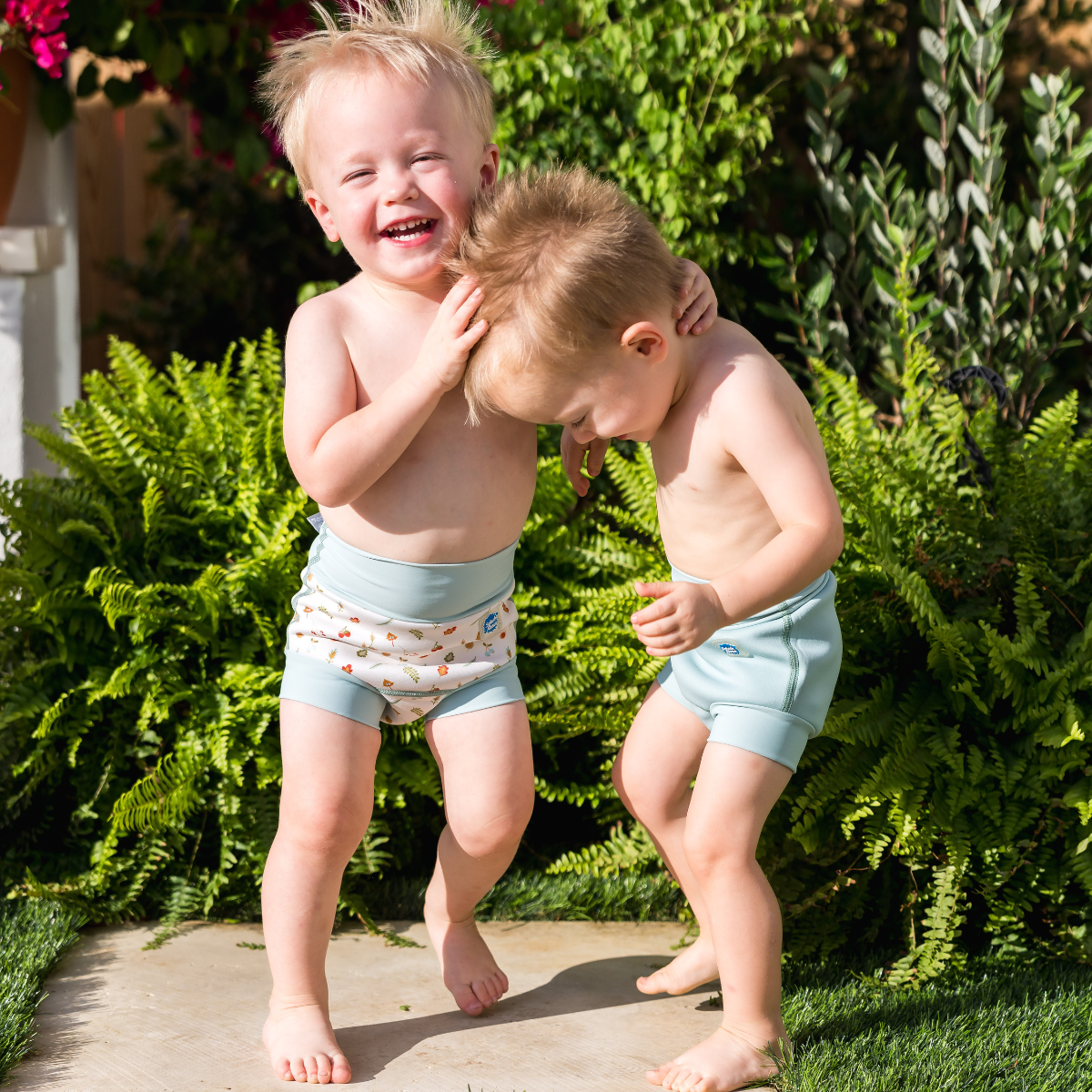
If your baby already has a sore bottom from diaper rash then it’s best to avoid swimming in chlorinated pools as the chlorine could irritate the diaper rash, making the area more sore. If your little one has a fungal diaper rash (also known as candida or thrush) this can also become irritated by chlorine so it’s best to give swimming a miss until your baby’s bottom has healed. If you’re in doubt, then speak to your Doctor.
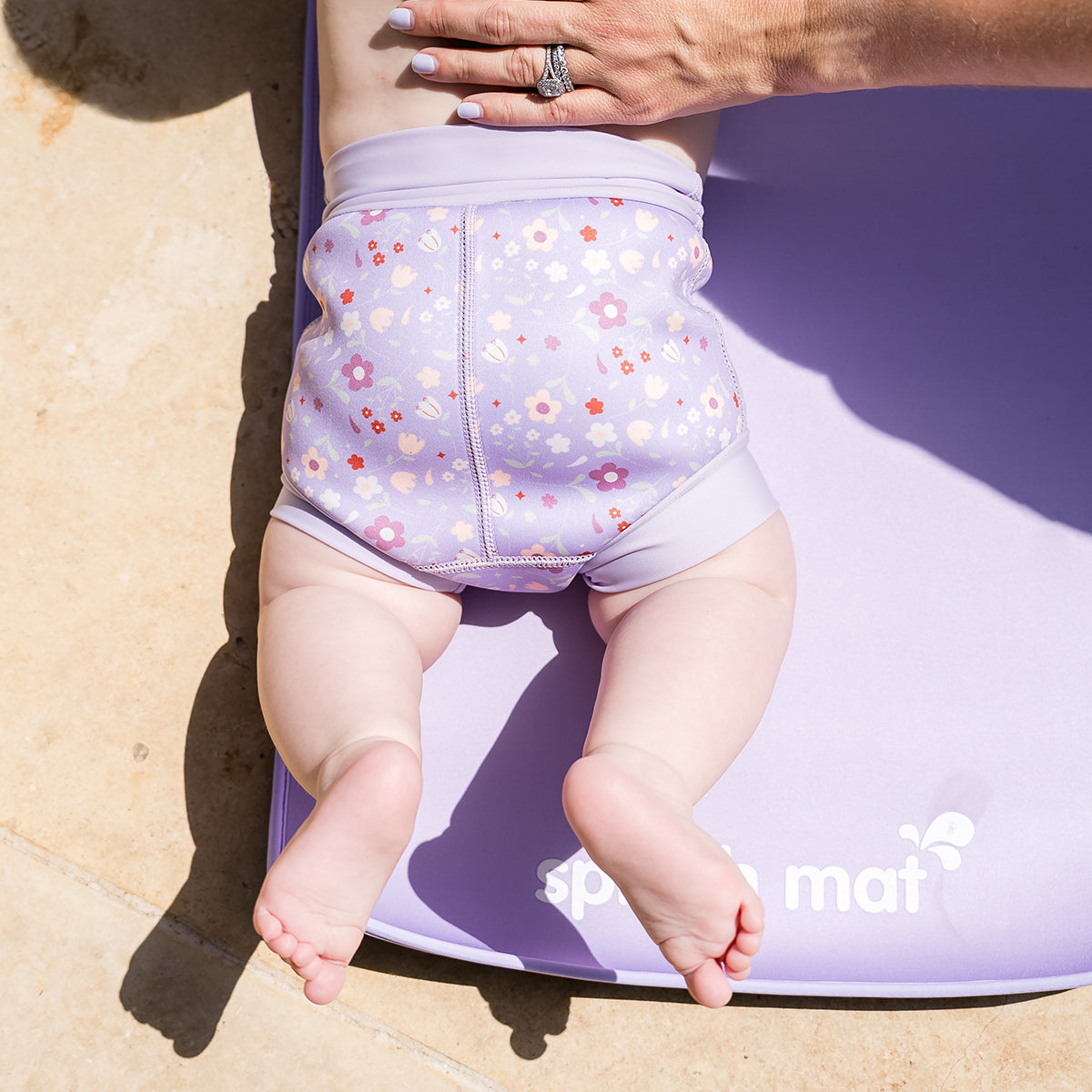
A swim diaper that is too tight is likely to rub your baby’s delicate skin which, as well as being uncomfortable, could cause chafing and exacerbate diaper rash. Reusable swim diapers tend to be a gentler option for babies’ skin than disposable swim diapers as they are made from soft, stretchy fabric. Reusable swim diapers, such as the Happy Nappy™ come in a wide range of sizes which means you can find the correct size for your little one to ensure a comfortable fit. Simply click on the ‘Size Guide’ button on any of the Happy Nappy™ product pages to find the best fit for your child.
Read further on how to fit a Happy Nappy™
swim diaper here

If your baby already has a sore bottom from diaper rash then it’s best to avoid swimming in chlorinated pools as the chlorine could irritate the diaper rash, making the area more sore. If your little one has a fungal diaper rash (also known as candida or thrush) this can also become irritated by chlorine so it’s best to give swimming a miss until your baby’s bottom has healed. If you’re in doubt, then speak to your Doctor.

A swim diaper that is too tight is likely to rub your baby’s delicate skin which, as well as being uncomfortable, could cause chafing and exacerbate diaper rash. Reusable swim diapers tend to be a gentler option for babies’ skin than disposable swim diapers as they are made from soft, stretchy fabric. Reusable swim diapers, such as the Happy Nappy™ come in a wide range of sizes which means you can find the correct size for your little one to ensure a comfortable fit. Simply click on the ‘Size Guide’ button on any of the Happy Nappy™ product pages to find the best fit for your child.
Read further on how to fit a Happy Nappy™
swim diaper here

You can find out everything you need to know about choosing the best swim diapers for your child here.
Want to learn more about baby swimwear? Go back to basics with our guide Where to Start: Baby Swimwear Essentials.